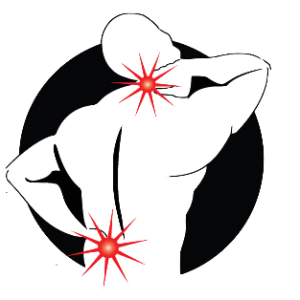 Potential Private Clients near Asheville NC of
Potential Private Clients near Asheville NC of
Kyle C. Wright Might Find It Useful to Know
What He Teaches His Very Clinically Successful
Students in His Schools of Advanced Bodywork
in Charlotte, NC and Jacksonville, FL.
This Will Help You Understand More About How
Kyle Works with His Private Clients …
Clinical / Medical Massage Therapy and Structural Bodywork: Advanced Training for Professional Licensure
Charlotte, NC • Jacksonville, FL
Bringing New Innovations To The Clinical / Medical
Massage Therapy and Structural Bodywork Profession
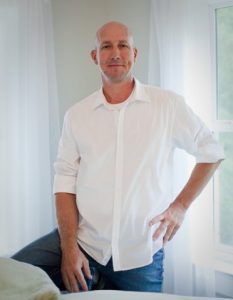 A Message from Kyle C. Wright, LBMT, Founder of The Schools of Advanced Bodywork:
A Message from Kyle C. Wright, LBMT, Founder of The Schools of Advanced Bodywork:
For over two decades I’ve had the privilege of being a part of one of the fastest growing professions in health care: massage therapy.
In 1990 I started my first clinical massage therapy school in Jacksonville, Florida, eventually evolving into five schools throughout the southeast. The well-planned curriculum enabled students to graduate with skills making them employable and able to meet the fast growing demand for clinically trained massage therapists.
A few years later I studied an Advanced form of Structural Bodywork and quickly integrated it into my practice and teachings in my school. Over the next several years, I had five schools in the Southeast and trained over 12,000 students in Advanced Structural Bodywork and Medical Massage Therapy.
My Home Base is now in Fairview, North Carolina, a short, 10 minute drive southeast of Asheville, NC.
What We Do: In a Nutshell
Clinical / Medical Massage Therapy
and Structural Bodywork …
addressing muscular imbalances and skeletal deviations such as twists, tilts and rotations of the pelvis, spine and shoulder girdle, in turn causing pain & dysfunction.
The Objective Of This Work is to provide a NON-Painful approach to relieving a Client’s pain and dysfunction by DE-compressing and balancing their musculo-skeletal structure.
We’ve Trained Over 12,000 Students
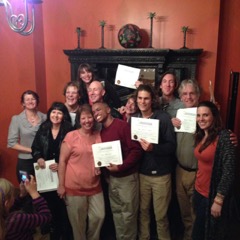
Students of the Schools of Advanced Bodywork
When I graduated from massage therapy school and started my first class with six high quality and dedicated students, I never imagined witnessing over 12,000 students graduating from my schools with the same level of determination I had.
In the 30 years since starting my first practice and massage school in Jacksonville, I’ve had the good fortune and freedom to experiment with new and innovative approaches to soft-tissue therapy. It is not always easy — and often even risky — to be an early adapter of new ideas and techniques.
This is especially true when the ideas go against common understandings and practices of the day. At the time, these common practices included much of what I had previously been taught by leaders in the field. Yet, the innovative and much different approach and techniques my own schools have been teaching for nearly 20 years are steadily working their way into acceptance by mainstream massage educators and practitioners.
Postural Distortions & Gravity:
A Root Cause of Pain & Dysfunction
Through practicing and teaching, I’ve evaluated and successfully treated thousands of people suffering from chronic pain. My approach in providing private therapy to Clients as well as teaching bodywork to students is based on discovering, then reducing or eliminating, postural distortions, musculoskeletal imbalances and myofascial pain.
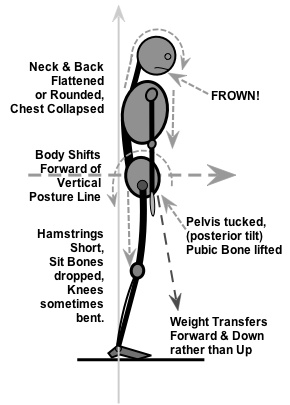
Postural Collapse from Structurally Over-Shortened Muscles
Much of the time, musculoskeletal pain is caused by the way the body opposes gravity inefficiently, meaning, their body weight has shifted off the bones and onto the muscles. It is my experience that many of the painful afflictions people suffer from are caused by the gravitational forces being continually and inappropriately applied to their body and the way their body opposes it, often with painful results.
It is muscles taking over the function of bones and a constant fight with gravity causing some or many muscles to tighten so much they actually feel as hard as bones.
This body shifting, altering and compensation, with accompanying chronic, musculofascial tension, often leads to a constant barrage of trigger point formation, referral of pain to distant areas, deviations (unevenness) in leg lengths, distortions in the pelvis and spine (misalignments), and depressed or elevated shoulder girdles.
As well, such distortions cause the all too common downward stooped & collapsed posture and forward head positioning.
A Deeper Understanding Of How Posture Works
Most often (and rarely mentioned in modern medical practices) is the lack of understanding of how postural distortions have direct and negative effects on the body. These negative effects are often from the body being pulled down and forward by gravity, literally compressing the body molecule–by–molecule, cell–by–cell. On top of that, most people are not even aware that poor posture can eventually lead to musculoskeletal pathology.
My objective in sharing this approach is for students to start focusing on muscles overly “locked” short from Chronic, Excess, Muscle & Nerve Tension & Stress (C.E.M.&N.T.) and the muscular imbalances linking poor posture, musculoskeletal pain and restriction of body movements.
Becoming a Specialist in Dissolving C.E.M.&.N.T.
with Clinical / Medical Massage Therapy and Structural Bodywork
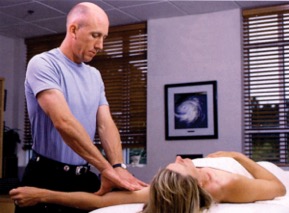 Clinical / Medical Massage Therapy & Structural Bodywork, one of many different types of massage, uses sensitive touch to manipulate soft tissues throughout the human body. Patients / Clients seek massage therapists for a number of reasons, including decompressing tired muscles, reducing stress and supporting general health.
Clinical / Medical Massage Therapy & Structural Bodywork, one of many different types of massage, uses sensitive touch to manipulate soft tissues throughout the human body. Patients / Clients seek massage therapists for a number of reasons, including decompressing tired muscles, reducing stress and supporting general health.
Clinical Massage Therapy involves your newfound ability to understand and effectively identify and manipulate soft tissues of the body for the purpose of reducing chronic, excess muscle and nerve tension & stress (C.E.M.&.N.T.) contributing in many ways to onsets of pain and dysfunction. It offers an in-depth look at the various causes, symptoms and conditions of muscle tension and the principles of reversing that tension.
And our clinical massage therapy provides opportunities for a Client to become far more aware of and responsive to their own body and its needs. This increases their results and the results last longer, sometimes MUCH longer.
DE-Compressing & Balancing the Human Structure
Structural Balancing scientifically tracks down the sources of aches, pains, and dysfunctions not sufficiently responsive to the usual localized treatment (at the location of symptoms) of neuromuscular and myofascial structures.
Clinical Massage Therapy uniquely focuses on the treatment of soft tissue to maintain, develop, augment or rehabilitate the patient’s physical function. Clinical massage therapy can improve the functioning of joints and muscles, the healing process, metabolism and circulation. This is done by first DE-compressing the soft tissues (muscles and fascia), then re-balancing these muscle groups.
Using a NO Pain, MORE Gain Philosophy, this unique approach to skillful resolution of chronic muscle tension and the problems it causes is the primary skill you’ll be developing here at the Schools of Advanced Bodywork.
This skill — and the related knowledge — is what will set you apart from many, if not most, of the therapists practicing today.
I firmly believe my North Carolina School of Advanced Bodywork, and the new sister school, the Florida School of Advanced Bodywork, will bridge the best of traditional massage and bodywork with leading edge clinical therapy techniques and practices.
Structural Balancing: In-Depth
To solve the above described problems, we use a unique system of Structural Analysis & Postural Assessment. By determining what the bones are doing, we can therefore evaluate what the muscles are doing.
The angles and rotations of the bones tell us which muscles have become chronically over-shortened, in turn becoming the targets of treatment. Whereas most methods of assessment focus on soft tissues and pain patterns, focusing on relationships between bones and between bones and gravity gives us far more accurate information as to which muscles to treat.
Muscles are the only thing in the human body with the ability to
physiologically shorten, therefore pulling bones out of alignment.
Muscle tension from adaptation, compensation, overload and repetitive injuries will, more often than not, lead to joint restriction, joint fixation and inflammation and lastly, joint deterioration. Muscles have the direct ability to compress, degenerate, deteriorate, and fragment spinal discs.
In many cases, chronically over-shortened muscles pull bones out of alignment, or muscles reactively adapt to distorted bone positioning and lock those bones into misalignment, more-or-less permanently if the Client does not find a practitioner how understands this process and how to treat it.
A precise knowledge of Structural Anatomy & Functional Kinesiology allows you to precisely evaluate the positioning of your Client’s structure.
We teach you to see through the soft tissues to the bones, providing a more accurate structural assessment of what’s really going on. Then, you’ll know which musculo-fascial units, the soft tissues, to treat.
You See, Bones Don’t Lie and Muscles Always Win!
The premise of this bodywork is to create symmetry among muscle groups by consciously applying effective manual techniques and stretching to chronically shortened muscles, not necessarily the painful ones. This can be achieved by learning and practicing deep-tissue work, the non-painful kind that isolates the causes of problems rather than just massaging the area of pain or complaint.
No Pain = More Gain!
We have found it unnecessary to push client’s muscles so hard and fast as to cause pain. Working too deep merely causes the client to tense up and resist the therapy. While painful therapy can work up to a point, the no pain approach provides far deeper access to the muscles and nerves, and longer lasting results.
DSL: Originator of the Fundamentals
David Scott Lynn (DSL EdgeWork: Yoga / Bodywork Therapeutics) contributed and collaborated with me in the writing, research and development of my textbook, Structural Balancing. In the mid-1990s, David originally taught me his philosophy of bodywork and shared his principles of effective psycho-muscular balancing & structural analysis techniques.
David taught me how to reach deeper levels into the body — Playing The Edges — without producing pain in the client.
The main things I learned form David were about playing the physical and mental “Edges” of pain and resistance and his theory on Chronic Excess Muscle & Nerve Tension & Stress (C.E.M.&N.T.). After incorporating his yoga and bodywork techniques in my practice and schools, I can say without reservation that his theories on muscular compensatory adaptation patterns allowed me to take my bodywork to the next level.
Providing A Superior, Individualized Education
Clinical Massage Therapy and Structural Bodywork is a compilation reflecting my years of education, practice and instruction in the field of clinical massage therapy. It is a product of the beliefs I share with so many others. One such belief is that students are entitled to superior education and individualized training so they may uphold, or excel beyond, professional standards they continually pursue.
The Florida SAB texts and curriculum are forward thinking and express my philosophy and interpretations of the neuromuscular and skeletal systems and their relation to the body’s structure and function. The text and graphics used at Florida SAB are sequenced so the fundamentals are set as the basis upon which more advanced techniques are built.
Focusing On The Essentials
Rather than attempt to encompass a wide-range of massage techniques, our program focuses more deeply on certain aspects — such as Clinical / Medical Massage Therapy & Structural Bodywork — and less on others. We do not, for example, teach Asian nor “Energy” work.
Throughout my career I built a strong following and reputation for being a goal and results oriented bodyworker, working on people that suffered from musculoskeletal pain. My work evolved to write the curriculum material and school’s syllabus to assist student’s educational development in learning and understanding a higher level approach to highly therapeutic massage and bodywork.
The goal of the Schools of Advanced Bodywork (SAB) curriculum is to prepare you, the student, so when you have a person on your massage table with complaints of muscle pain and / or restriction you’ll have a clearer picture and a deeper level of understanding of what is below the skin surface, what you’re working on, and what muscles could be causing it.
While learning at SAB, I strongly encourage use of repetition while learning hand placements. Repetition is extremely beneficial for students; as lessons are repeated, they become imprinted on the memory.
During classroom “trades,” students build confidence with each practice session. We encourage students to give continuous feedback during trades between giver and receiver, whether it is in the form of praise, constructive criticism or both. Feedback further allows for academic and spiritual growth while perfecting hands-on delivery skills.
Join A Rapidly Growing, and
Much Needed, Profession
Additionally, I recognize that massage therapy can be extremely effective either by itself or as an adjunct to other modalities, such as flexibility and strength training exercises, chiropractic and acupuncture, and emotional and spiritual healing.
The SAB teaching staff has 30 years experience in the massage and bodywork profession both in practice and instruction. It is with great pleasure we share our massage and bodywork experience, knowledge and practical skills with you. I commend both instructors and students for choosing this course of study and profession.
I encourage students to explore the art and science of clinical massage therapy and structural bodywork and everything it has to offer, as well as to expand their study and practice of massage therapy in general. The focus should not be on so-called “alternative methods,” but on adjunctive methods.
I sincerely hope that together we may continue to enlighten the world about the value of medical massage therapy and structural bodywork and how it fits into our healthcare system today and into the future.
Thank You For Visiting Our Website and Reading About the Schools of Advanced Bodywork.
Kyle C. Wright, LMBT, NCTMB
One-On-One with KYLE C. WRIGHT
Kyle C. Wright, LMBT, NCTMB, offers 1, 2 and 3 hour private bodywork sessions for those seeking pain relief. Kyle’s approach to massage and bodywork is to eliminate muscular imbalances and postural distortions often causing chronic musculoskeletal pain and joint restrictions.
Deviations in leg lengths, distortions in the pelvis, functional scoliosis, and disc related problems all have a soft tissue component addressed within each bodywork session. Plantar fasciitis, knee, hip, back, and neck pain as well as rotator cuff injuries usually stem from muscular imbalances caused by one group or groups of muscles “locking short” while the opposing muscles are “locking long.”
If such muscular imbalance is left untreated, it often leads to chronic pain. Injuries very often result from repetitive motion, muscular overload and poor posture. Kyle specializes in restoring postural/structural integrity and long-term, chronic pain relief.
To look further into your situation and what might be causing your pain and schedule an appointment with him and his staff, give Kyle a call. Kyle takes one session at a time and is a goal oriented bodywork therapist that gets results.
(See Testimonials for Kyle)
